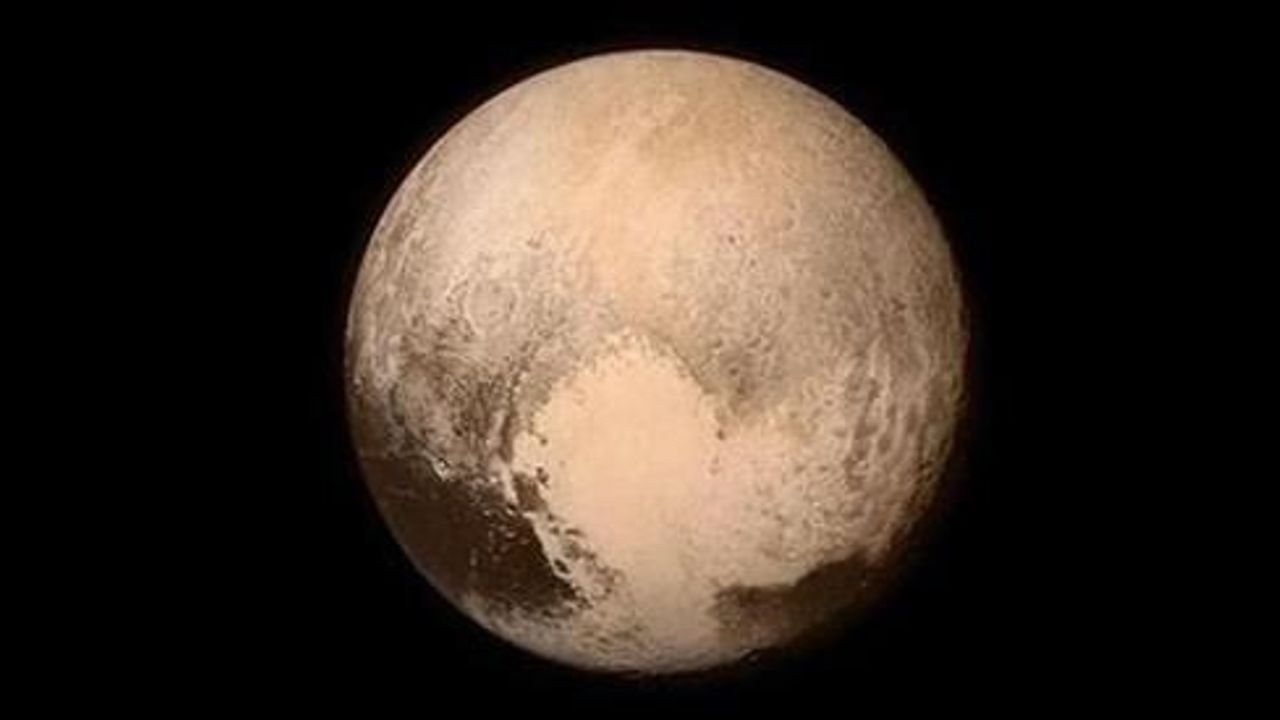Humanity visits Pluto for first time
Science |
New Horizons spacecraft encounter tiny dwarf planet on edge of solar system after nine-year trek

Font Size:
NASAs New Horizons spacecraft reached Pluto on Tuesday after a nine-year, 4.8-billion-kilometer (3-billion-mile) trek, completing humanitys quest to visit all of the classical nine planets.
At 7.50 a.m. EST (GMT 11:50), the spacecraft was 12,600 kilometers (7,800 miles) above the surface of the mysterious dwarf planet, speeding along at 49,600 kph (30,800 mph), frantically collecting as much data as it can for the next few hours.
"We have completed the initial reconnaissance of the solar system, an endeavor started under President [John F.] Kennedy more than 50 years ago and continuing to today under President [Barack] Obama," the chief scientist of the New Horizon mission, Alan Stern, said in a statement amid celebrations at the Johns Hopkins Applied Physics Laboratory in Maryland, which is hosting New Horizon mission control.
The crowd included descendants of Clyde Tombaugh, the astronomer who discovered Pluto in 1930. New Horizons is carrying a small amount of Tombaughs ashes.
It's really historic what the U.S. has done, Stern added, and the New Horizons team is really proud to have been able to run that anchor leg and make this accomplishment.
However, no one is sure right now of the crafts status. In preparation for the encounter, New Horizons went radio silent late last night and will not check in with mission control for several more hours. Just before 9 p.m. EST (GMT 01:00), New Horizons is expected to beam back to Earth a trove of data that is being collected by seven instruments.
NASA on Tuesday released the clearest picture yet of Pluto, exclusively on image-sharing service Instagram, showcasing the pinkish hue of Plutos surface dotted with several dark patches.
New Horizons has already added to our knowledge of far-off Pluto it is slightly larger in diameter than initially thought and contains methane and nitrogen ices frozen at its polar region. Many more images and reams of data are expected to be released Wednesday.
Anadolu Agency
At 7.50 a.m. EST (GMT 11:50), the spacecraft was 12,600 kilometers (7,800 miles) above the surface of the mysterious dwarf planet, speeding along at 49,600 kph (30,800 mph), frantically collecting as much data as it can for the next few hours.
"We have completed the initial reconnaissance of the solar system, an endeavor started under President [John F.] Kennedy more than 50 years ago and continuing to today under President [Barack] Obama," the chief scientist of the New Horizon mission, Alan Stern, said in a statement amid celebrations at the Johns Hopkins Applied Physics Laboratory in Maryland, which is hosting New Horizon mission control.
The crowd included descendants of Clyde Tombaugh, the astronomer who discovered Pluto in 1930. New Horizons is carrying a small amount of Tombaughs ashes.
It's really historic what the U.S. has done, Stern added, and the New Horizons team is really proud to have been able to run that anchor leg and make this accomplishment.
However, no one is sure right now of the crafts status. In preparation for the encounter, New Horizons went radio silent late last night and will not check in with mission control for several more hours. Just before 9 p.m. EST (GMT 01:00), New Horizons is expected to beam back to Earth a trove of data that is being collected by seven instruments.
NASA on Tuesday released the clearest picture yet of Pluto, exclusively on image-sharing service Instagram, showcasing the pinkish hue of Plutos surface dotted with several dark patches.
New Horizons has already added to our knowledge of far-off Pluto it is slightly larger in diameter than initially thought and contains methane and nitrogen ices frozen at its polar region. Many more images and reams of data are expected to be released Wednesday.
Anadolu Agency
Video News

WORLD
26 Mart 2024 - 11:18
Photo News






